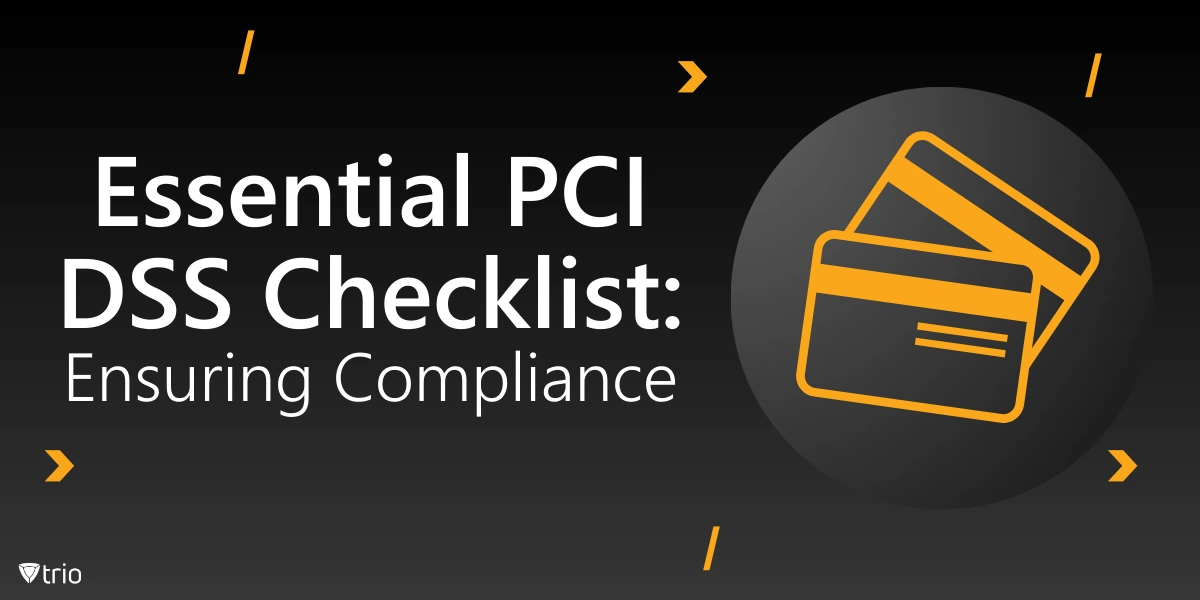Payment Card Industry Data Security Standards, or PCI DSS, play a critical role in protecting sensitive cardholder data and are essential for businesses that process, store, or transmit credit card information. This blog will walk you through what a PCI DSS checklist entails, why it’s essential, and a structured template of PCI DSS in its full form to streamline your compliance journey.
What is PCI DSS?
PCI DSS (Payment Card Industry Data Security Standard) is a set of security standards designed to ensure that all companies that accept, process, store, or transmit credit card information maintain a secure environment. The goal is to protect cardholder data, prevent data breaches, and reduce fraud in card transactions. Created by the PCI Security Standards Council (SSC) — comprising major card brands like Visa, Mastercard, and American Express — PCI DSS compliance is mandatory for any business handling credit card transactions, regardless of size or transaction volume.
The standards are comprehensive and cover multiple security aspects, from physical security to encryption, access controls, and monitoring. Non-compliance can result in hefty fines, reputational damage, and the potential loss of the ability to process card payments.
Why PCI DSS Compliance Matters
PCI DSS compliance is more than just meeting regulatory requirements. Compliance with these standards helps organizations:
- Protect Cardholder Data: Ensuring sensitive payment information is safe from breaches and fraud.
- Enhance Customer Trust: Building confidence among customers by safeguarding their financial information.
- Avoid Penalties: Avoiding fines, potential legal action, and damage to your reputation.
- Reduce Financial Liability: Mitigating the risk of financial losses from security breaches.
PCI DSS Compliance Levels
PCI DSS compliance is divided into four levels, determined by the volume of transactions a business processes each year. Each compliance level has specific requirements:
- Level 1: Over 6 million transactions per year.
- Level 2: 1 to 6 million transactions per year.
- Level 3: 20,000 to 1 million transactions per year.
- Level 4: Fewer than 20,000 transactions per year.
The higher your level, the more rigorous the compliance requirements and audits. For example, Level 1 requires a yearly Report on Compliance (ROC) by a Qualified Security Assessor (QSA), while lower levels may only need to complete a Self-Assessment Questionnaire (SAQ). Each guarantees its own PCI DSS certification.

PCI DSS Compliance Checklist
Below is a structured PCI DSS compliance checklist that every organization handling payment card data should consider. This PCI DSS audit checklist includes the 12 primary PCI DSS requirements, with each broken down into actionable steps.
1. Install and Maintain a Secure Network
- Firewall Configuration: Ensure firewalls are configured to protect cardholder data from unauthorized access.
- Router Security: Establish security protocols on routers and wireless access points.
2. Protect Cardholder Data
- Data Encryption: Encrypt cardholder data both in transit and at rest to prevent unauthorized access.
- Encryption Key Management: Maintain strict control over encryption keys to prevent misuse.
3. Maintain a Vulnerability Management Program
- Anti-virus Software: Install and regularly update anti-virus software on all systems, especially those commonly affected by malware.
- Regular Updates: Ensure all system components and software are kept up-to-date with the latest security patches.
4. Implement Strong Access Control Measures
- Limit Access to Data: Only authorized personnel should have access to cardholder data.
- Unique IDs: Assign unique IDs to each person with computer access to ensure accountability. This includes strict PCI compliance password requirements.
- Restrict Physical Access: Physically restrict access to cardholder data for employees and third parties.
5. Implement and Maintain Strong Security Policies
- Documented Security Policies: Establish and maintain a security policy covering all personnel.
- Periodic Training: Conduct regular security awareness training to educate employees about threats and compliance requirements.
6. Monitor and Test Networks Regularly
- Log Management: Maintain logs of all access to network resources and cardholder data.
- Regular Testing: Conduct regular vulnerability scans and penetration testing.
Comprehensive PCI DSS Compliance Template
Here’s a PCI DSS checklist template to streamline your PCI DSS compliance process:
Best Practices for Maintaining PCI DSS Compliance
Once you’ve achieved PCI DSS compliance, it’s crucial to keep up with industry trends and security improvements. Here are some best practices:
- Continuous Monitoring: Use tools to continuously monitor your network for any unusual activity.
- Regular Audits: Schedule regular audits, whether internal or through a third party, to ensure ongoing compliance.
- Employee Education: Educate employees regularly on emerging threats and compliance protocols.
- Implement Multi-Factor Authentication: Enhance security for systems with sensitive data by implementing multi-factor authentication (MFA).
Common Pitfalls in PCI DSS Compliance
Failing to comply with PCI DSS standards can be costly. Here are some common mistakes to avoid:
- Outdated Software: Failing to keep software and systems up-to-date with the latest security patches can lead to vulnerabilities.
- Insufficient Encryption: Without robust encryption, sensitive data can be at risk.
- Poor Access Control: Allowing unnecessary access to cardholder data can increase the chances of insider threats.
- Lack of Employee Training: Employees unaware of security practices can inadvertently contribute to security incidents.
The Cost of Non-Compliance
Failing to comply with PCI DSS can lead to substantial penalties, including:
- Fines and Penalties: Ranging from $5,000 to $100,000 per month, depending on the level of non-compliance.
- Reputational Damage: Non-compliance increases the risk of data breaches, which can lead to significant reputational harm.
- Legal Consequences: In the event of a data breach, companies may face legal action from affected customers or card networks.
Conclusion
PCI DSS compliance is essential for protecting your business and your customers from the risks associated with payment data breaches as part of your vulnerability management program. This checklist offers a practical roadmap for achieving and maintaining compliance, ensuring that your business adheres to stringent security and IT compliance standards. By taking the steps above and continuously monitoring your systems, you can avoid costly breaches, protect sensitive cardholder data, and maintain the trust of your customers.
Interested in simplifying PCI DSS compliance for your organization? Try Trio’s comprehensive Mobile Device Management security solution with a free demo today and take the first step toward a secure, compliant payment environment.
Know about news
in your inbox
Our newsletter is the perfect way to stay informed about the latest updates,
features, and news related to our mobile device management software.
Subscribe today to stay in the know and get the most out of your mobile
devices with our MDM solution app.
Recent Posts

Erase the Risk: Protect with Zero Standing Privileges
Learn how zero standing privileges eliminate persistent access rights, enhance data security and reduce the risk of unauthorized access.

Understanding Access Control Types in Cybersecurity w/ Examples
Thorough understanding of access control types & the knowledge to make informed decisions about implementing security measures in your organization.

Cloud Data Protection: Safeguarding Information in the Cloud
Learn essential strategies for robust cloud data protection, exploring tools, best practices, and policies that safeguard sensitive information.





